What Settings Do You Set Your Camera For A Live Theater Show
Theatre photography, concert photography, and dance photography are all examples of stage photography.
They're all a lot of fun to photograph, merely definitely have their challenges. This article is full of tips that will assist you to improve your stage photography.
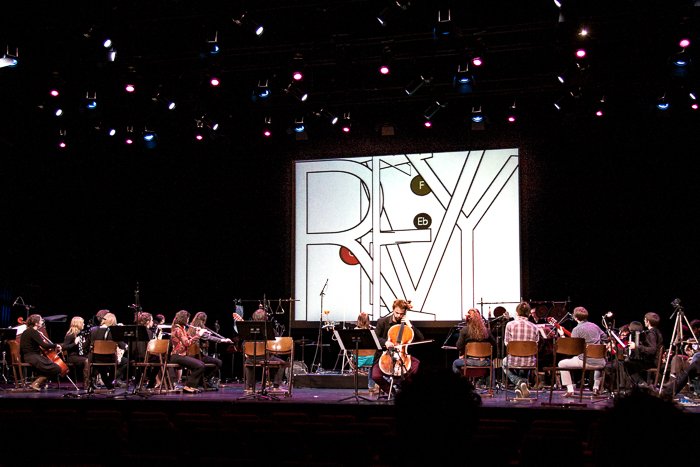


1. Stage Photography Etiquette Rules to Follow During Performances
When you lot are photographing a performance, and peculiarly a alive one, there are some rules you need to follow. Otherwise, you're likely to get kicked out of the venue.
Enquire If Y'all Tin Take Photos
The starting time thing to know if is you are allowed to take photos. Every live consequence has its own policy. If y'all are not the photographer hired by the identify or the performers, it is best to ask.
If they say no, the best tip I can give y'all is to enjoy the functioning.
Respect Others
If you are at a live performance, think that others accept payed their ticket to enjoy the spectacle. Don't movement around too much (information technology's distracting for both the audience and the performers) and don't make noise.
If you want to move more freely, consider shooting from the dorsum with a long telephoto lens. A restricted area with no public is also a good option, if yous tin can access it.
Be Invisible During a Stage Operation
- Dress in dark clothes to blend with the darkness;
- Turn off the AF low-cal to avoid distracting the performers;
- Do not use flash for any reason. If you are too far, it's useless anyway, and if y'all are close, it'south a distraction that will have you tossed out pretty soon;
- Muzzle your DSLR camera to pass up shutter noise. If you accept information technology, use a silent mode or, even better, the electronic shutter.
- If yous are the official photographer and there is more than one spectacle, consider covering both, changing your place from one show to the other.
two. Get To Know The Spectacle
There are many restrictions in place when covering a live operation. This is why information technology'southward best to research the show you plan on photographing.
This fashion y'all'll be prepared to capture the near important parts from the best possible bending: a musician'due south solo, a dance move, a particular deed in a play, the entrance on the stage of your kid, etc.
Attend Rehearsals
If yous tin can, inquire to attend the rehearsals. You tin can find how people move on stage, which side of the phase they are on nearly of the time, what they do and when.
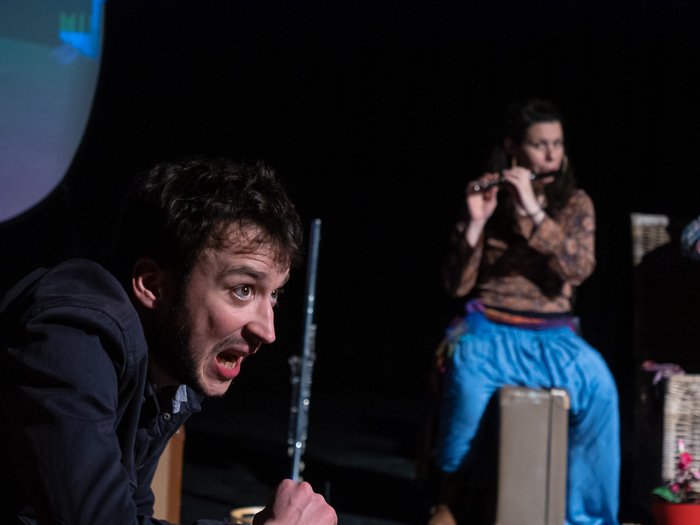
Take reward of this fourth dimension and opportunity to endeavour different angles and also to take some backstage photos.
Apparel rehearsals, sometimes chosen dry out runs, requite you the best photographic opportunities.
The actors are dressed as they will be in the live performance, at that place is no public, you lot can move more freely and you tin experiment with camera settings and angles.
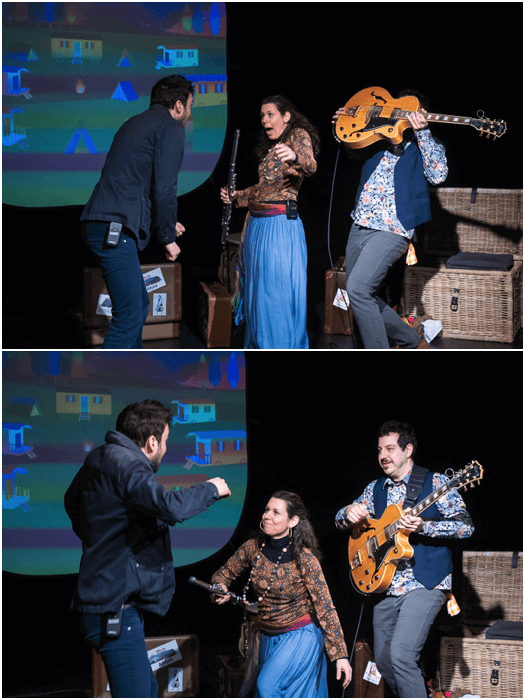
3. Best Gear for Stage Photography
Photographic camera
Virtually of the fourth dimension you lot tin can enter with a meaty camera. Interchangeable Lens Cameras, such as DSLRs and mirrorless, are usually forbidden.
Some loftier-end compact and bridge cameras, like the Sony RX100 and RX10, and the Catechism G7X series, can deliver very skillful results.
If yous can bring your DSLR or mirrorless photographic camera inside, you want one that performs well in low lite weather. ISO will be pushed up to 1600 or more than.
Full frame cameras are the natural choice for the pro stage photographer. But you tin get very nice results even with a photographic camera sporting a sensor every bit modest as a 1″-type sensor (crop gene 2.7x).
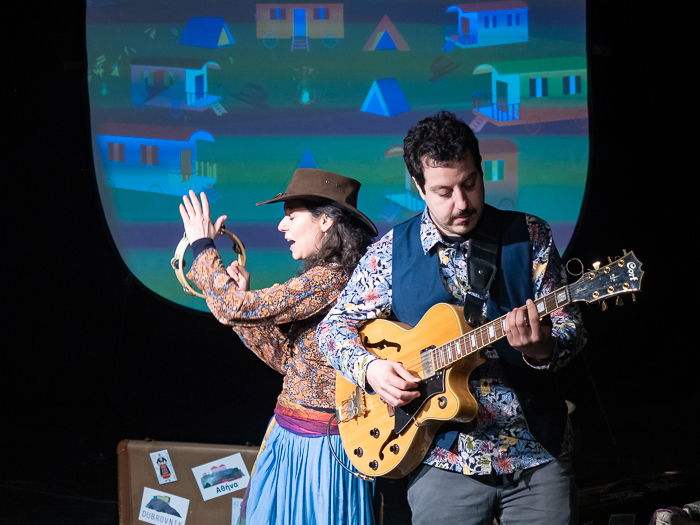
For a given lens and aperture, a smaller sensor will grant you a bit more depth of field than a full frame photographic camera. This can assist you lot reduce the number of photos with missed focus.
Accept a Fast Zoom Lens
If you are the hired lensman or there are no restrictions, a fast, zoom lens is the ideal drinking glass to mountain on your DSLR or mirrorless photographic camera.
In a small venue, I like the 24-200mm of my Sony RX-10. I can get from covering the entire scene with the wide end of the zoom, to zoom in and have headshots of the performers.
A very popular choice among DSLR user and pros is a seventy-200mm zoom lens, typically f/two.viii constant.
4. Set Your Camera to Piece of work Fast and Consistently
Here is how I like to set up my camera:
- Image Quality RAW: better quality and I don't have to worry nearly white balance;
- Lens Stabilisation ON: this will prevent me from introducing photographic camera milkshake in my images;
- Back Focus Button for AF: by decoupling the AF office from the shutter, I tin can focus just when I need and salve time when firing the shutter;
- C-AF: I sometimes employ continuous auto focus with subject field moving fast upwardly and downward the phase;
- Continuous Shooting: if there is a great bargain of movement, I like to photograph using continuous shooting mode to maximise my chances to get a skillful prototype;
- ISO: I usually work with ISO in-between 1600 and 2000. Some people like to utilise motorcar ISO, but I similar to have images that are consistently exposed for a given moment of the bear witness.
- Metering: I like to apply Spot or Middle Weighted metering, if I am not using a wide angle lens to get the entire scene in.
- Transmission Way: I like to shoot in transmission mode, if the light is constant, eastward.g. at a classical concert. Otherwise, I like to shoot in S style and keep the shutter speed at ane/100 at the very least, to freeze the action on the stage.
How to Etch for Phase Photography
This is the most difficult part of phase photography. You accept set up your camera, your settings and now y'all have to make images that convey the feeling of the performance.
You have to evidence the fun, the drama, the tension, the playing, etc.
A adept limerick is a must. This means you need to know the play, so that the decisive moment doesn't come at a surprise, just yous tin can wait for information technology to happen.
A safety and general composition dominion is the rule of thirds. It will give plenty space to the subject to look/motion in.
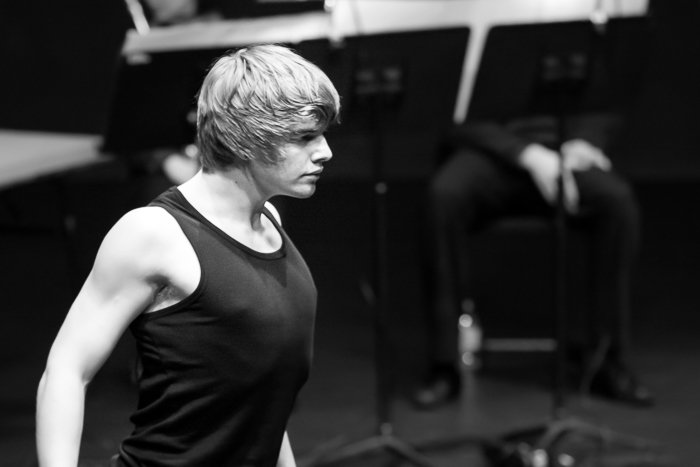
Close in on a Subject area
We are mostly working at a wide aperture with a zoom lens. Considering of this, depth of field can be rather shallow. This tin can help to naturally isolate the subject from the other people or a busy scene on stage.
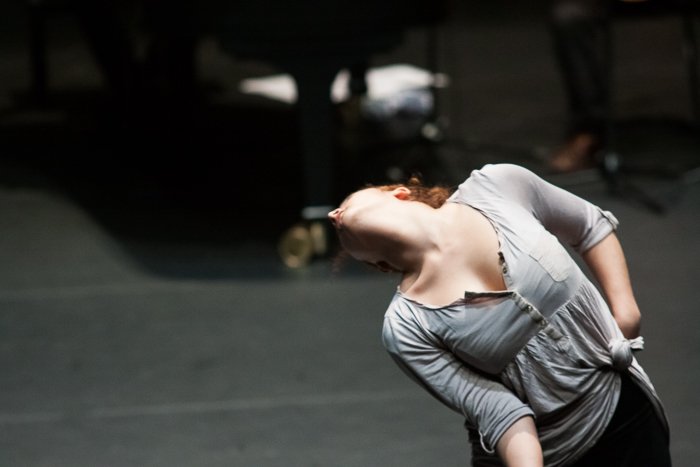
Headshots are keen to capture facial expressions to transmit feelings.
Utilize moderate shut-ups when you want to capture body language and motion.

five. Take Broad Angle Shots to Prove the Entire Stage
Particularly in small venue, wide angle shots are great to prove the entire stage and even part of the public, if y'all are alive.
The beauty of wide shots is their ability to capture the bear witness as a whole. They show how scenography, lighting and artists all work together to create the atmosphere.
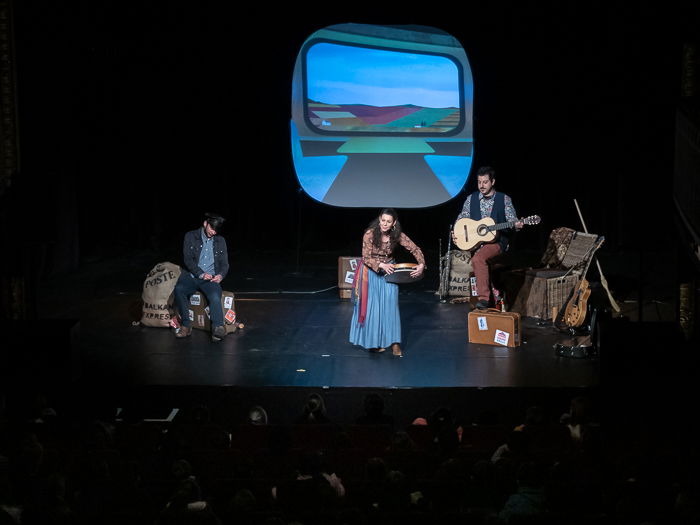
It is important to respect the lighting of the scene. Forget the white balance. If the scene is blue, for case, at that place is a reason for information technology.
It might be night, as in the image beneath. Or information technology might be the particular mood the artists want to convey.
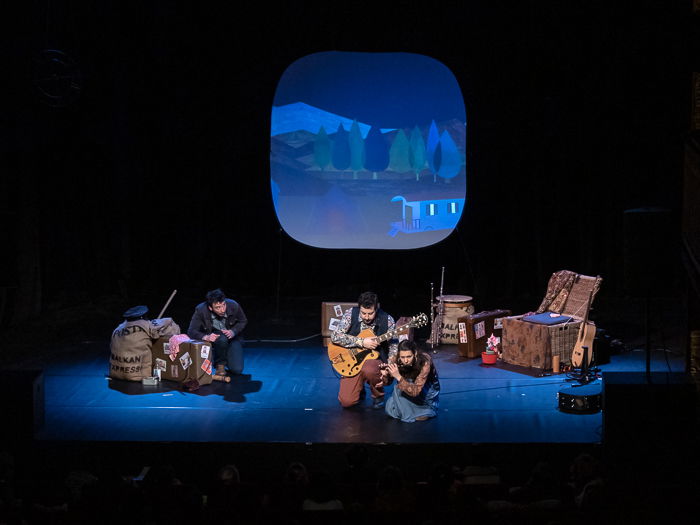
The way the lights appear in the scene is part of the show. In the epitome below the key light was on the pianist, to isolate her more from the rest of the scene that was kept darker.
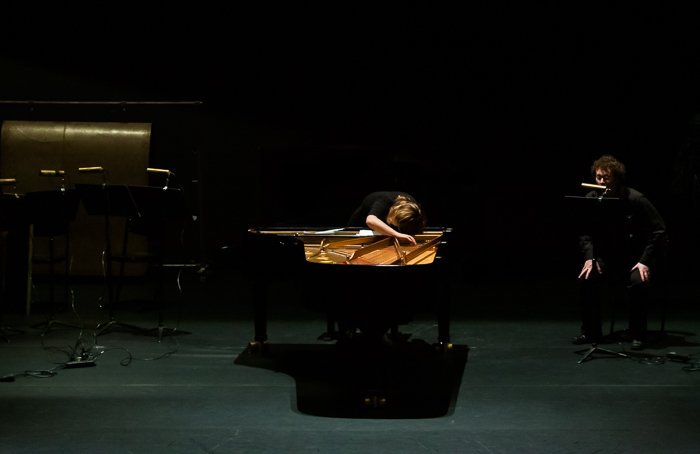
If yous are next to the stage, you can utilize broad angle lenses in combination with a low angle to create a more dynamic and powerful paradigm.
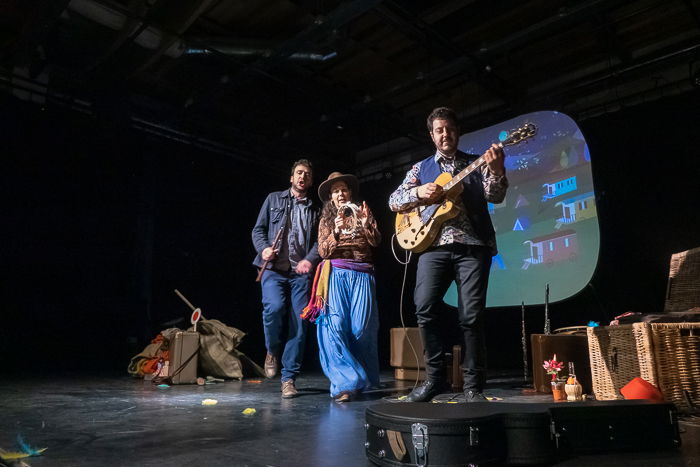
If you lot tin can become up close, like during a rehearsal, experiment with the manner a wide bending creates distortions.
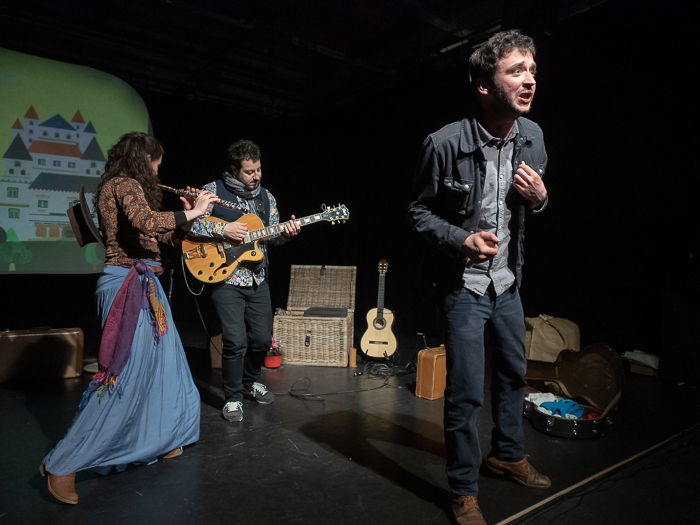
6. Capture the Movement
Capturing motility is important in theatre and stage photography. You can practise so by photographing a particular moment where movement is obvious in the body linguistic communication.
Similar in the photo below.
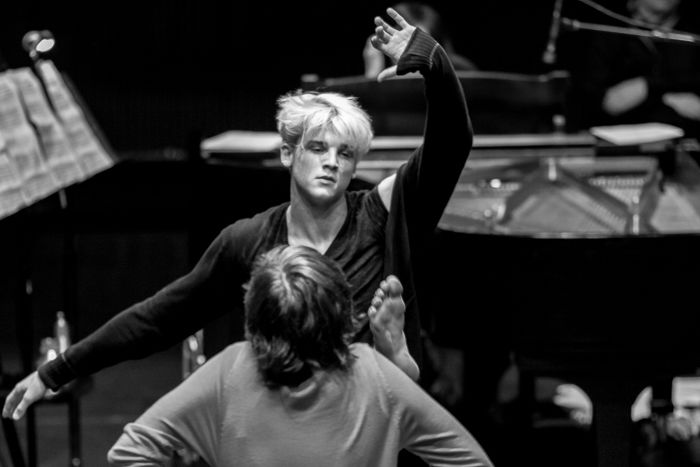
A relative wearisome shutter speed to allow some movement blur is a great fashion to convey movement.
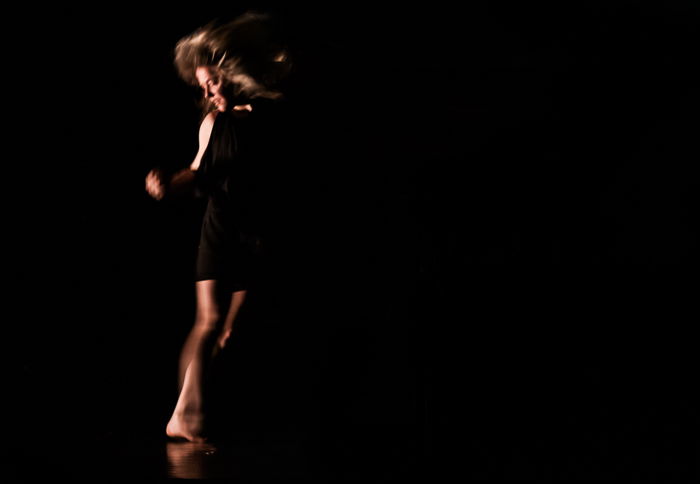
With more people on phase, yous need to create a counterbalanced composition.
Use Triangles
If y'all accept three people, you should photo them when they are forming a triangle on the scene.
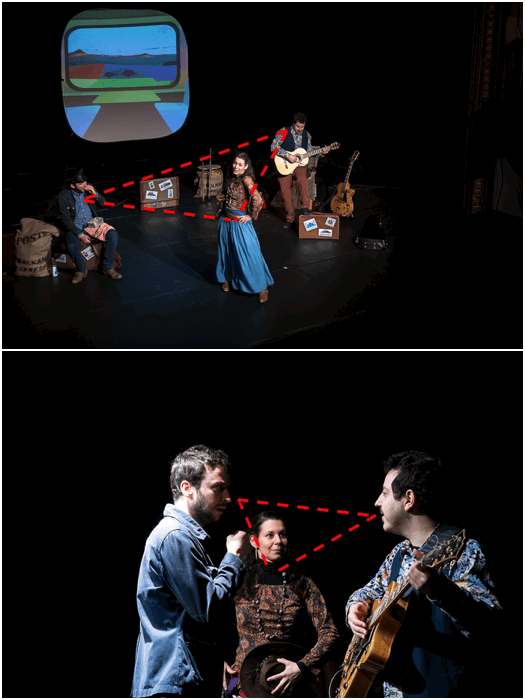
Split Them into Groups
This works nicely with an odd number of people on stage, who are moving and interacting.
In the image below, I accept waited for two of the three artists on stage to come closer and interact. Splitting the people in groups is a well-known dominion in group photography.
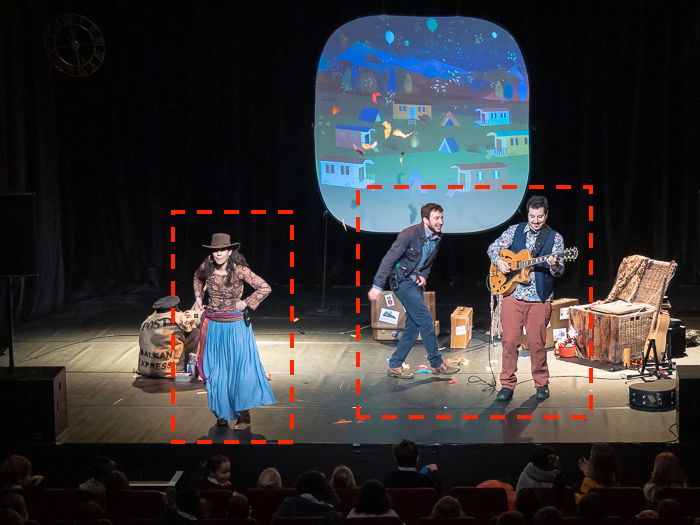
Line Them Up
Having the artists on the same line works nicely if you lot are composing from the side of the stage. Keep the line somehow diagonal in the frame.
This will make your shot more dynamic.
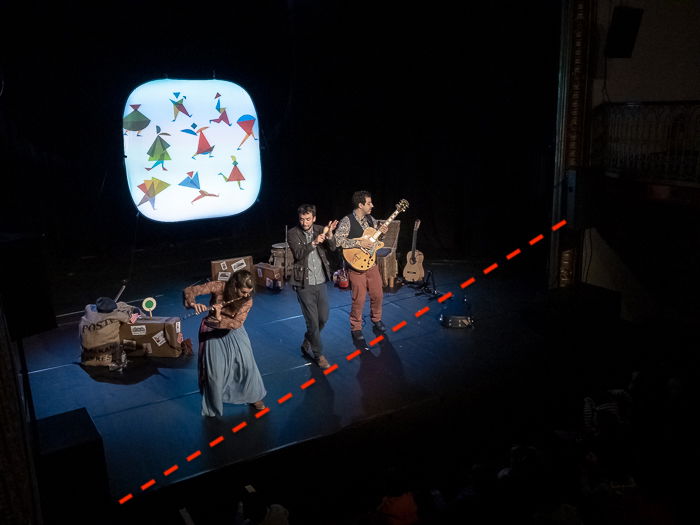
Capture Interactions On Stage
People on stage will collaborate and it is overnice to portray those moments. Information technology lets the viewer appoint with them and share the emotions on stage.
The kind of interactions you should expect forrard to can be physical, like the two musicians singing together in the photo below. A shut-up works really well for this kind of shot.
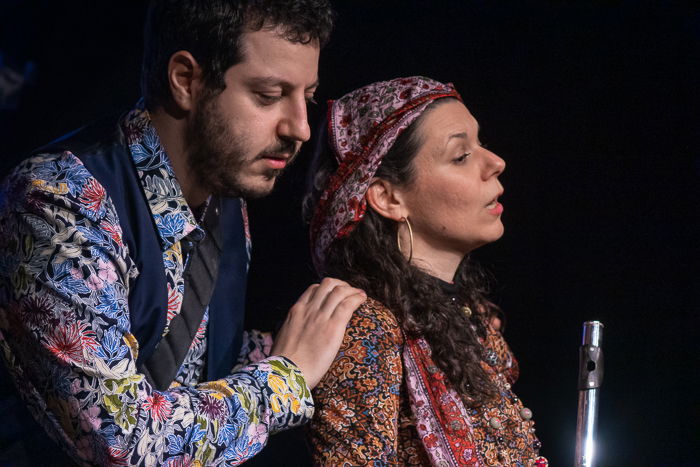
Another thing to await for is how actors look at and react to each other to transmit emotions.
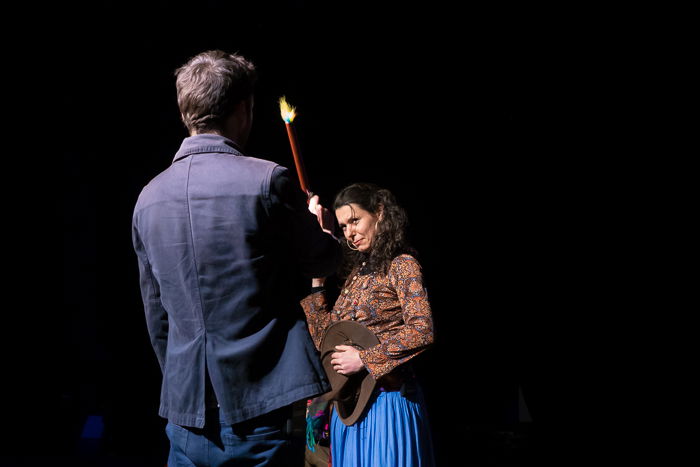
Finally, action can involve different planes. In the epitome below, it is articulate that the people in the background are planning something for the guy in the foreground.
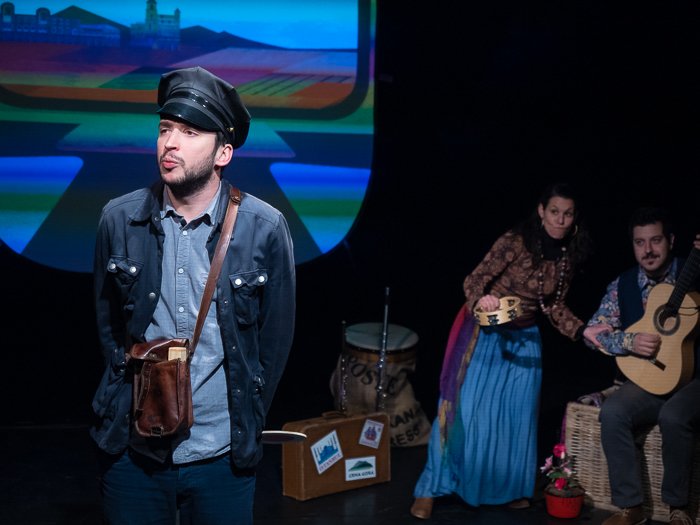
7. Backstage Photography Can Add to the Story
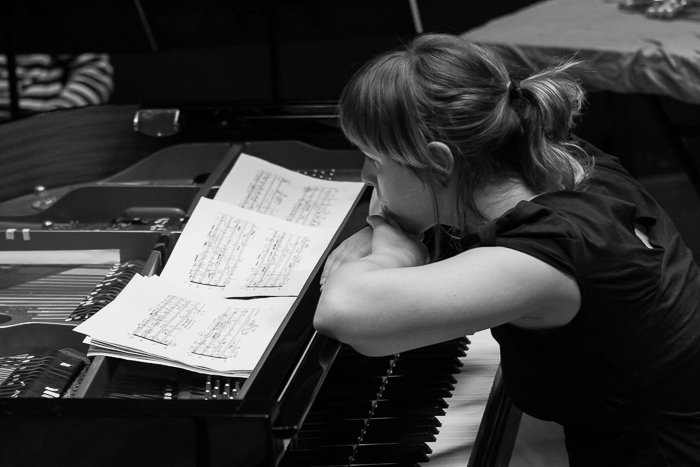
If yous are the hired photographer and have admission to rehearsal and can follow the preparations, this is the time to practise some backstage photography.
A classic way to exercise backstage photography is to shoot black and white. Colours work just as well.
Try to cover different points of view, meetings, and relaxing moments.
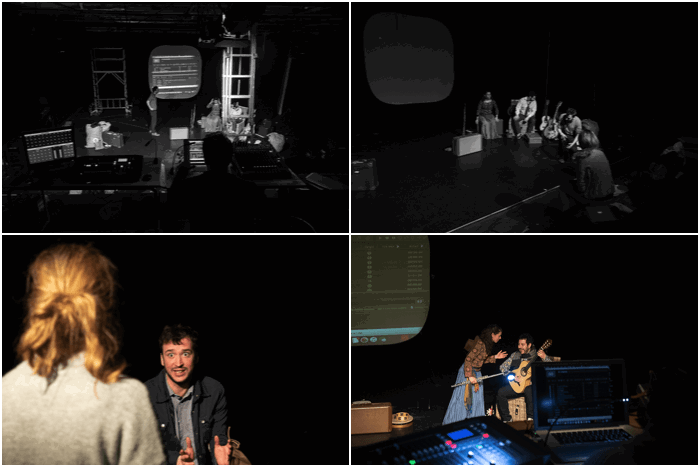
Determination
These tips will aid you get better images next time y'all are upwardly for a stage or theatre photography session.
Remember to have fun and enjoy the performance likewise!
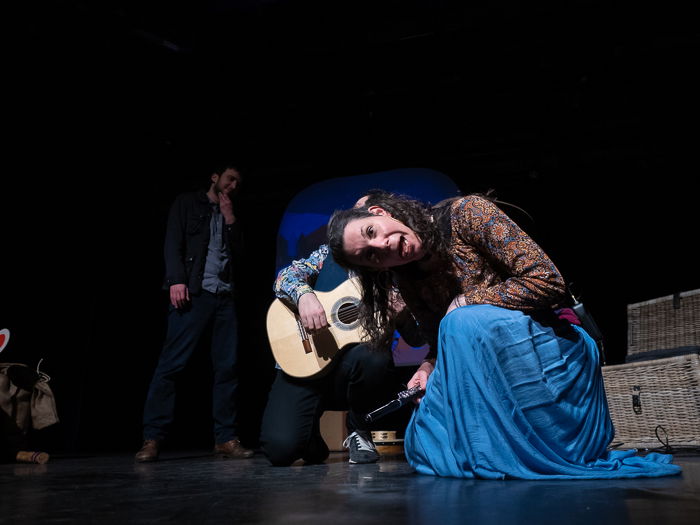
Source: https://expertphotography.com/theatre-stage-photography-tips/
Posted by: etheridgethersen.blogspot.com

0 Response to "What Settings Do You Set Your Camera For A Live Theater Show"
Post a Comment